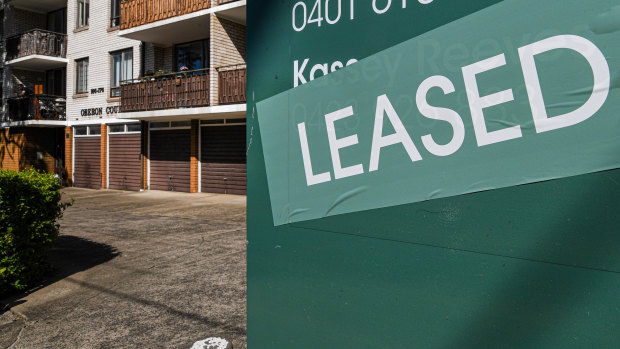
Save articles for later
Add articles to your saved list and come back to them any time.
Rents could be up to 8 per cent lower, saving renters $32 billion in payments to landlords and real estate agents over the next decade, as Prime Minister Anthony Albanese sets up another fight with the Greens over national housing policy.
Independent analysis by the centrist Grattan Institute think tank shows upward pressure on rents will be reduced if states and territories deliver an extra 200,000 new homes on top of an initial target of 1 million.
The federal government’s $3.5 billion plan to boost housing supply would reduce rents by 8 per cent over the next decade, says the Grattan Institute.Credit: Peter Rae
Premiers and chief ministers on Wednesday backed a suite of proposals from Albanese at national cabinet to massively boost housing supply between 2024 and 2029, and improve renters’ rights.
Under the $3 billion New Home Bonus, states and territories will get about $15,000 in federal funding for every dwelling built above the earlier 1 million target, with the aim of adding 200,000.
A separate $500 million competitive fund, called the Housing Support Program, is available to councils and states to encourage more construction near transport hubs and employment centres, a concept vocally backed by most premiers.
Grattan’s economic policy program director Brendan Coates said the $3.5 billion in incentive payments would make it worthwhile for states to get enough new homes built that it would put downward pressure on the rental market.
He said if the plan was implemented in full, the 200,000 extra homes could reduce rents by 4 per cent, saving renters $8 billion by 2029. Over the coming decade, the extra supply of dwellings would keep rents 8 per cent lower, saving renters $32 billion.
“It’s a good plan, but now it needs to be delivered. The devil will be in the detail of the incentives framework, to make sure the states are only being rewarded for getting homes built that wouldn’t otherwise have been built,” he said.
“And the federal government still has work to do to ensure we can find the skilled workers needed to build these extra houses, including by streamlining pathways to skilled migration.”
At the Labor Party’s national conference on Thursday, Albanese announced the promised Help to Buy scheme – under which the government will take an equity stake in a new home for low and middle-income earners – would start next year.
The states will have to pass their own legislation for the scheme – based on existing state-based programs – which the federal government says will help up to 40,000 households over coming years.
Albanese admitted the housing market was hurting buyers and renters.
“The simple truth is, it’s harder these days, harder for so many more Australians, harder for people who need public or community housing, harder for renters and harder for first homebuyers. The fundamental answer to all of this, of course, is supply, building more homes,” he said.
“A home is the foundation on which you build everything else, there is nothing that lets you reach higher than a solid floor under your feet. Nothing like a roof over your head to give you the sense that the sky is the limit.”
But Opposition Leader Peter Dutton was sceptical that all 1.2 million homes would be built.
“Increasing it to 1.2 million might sound good, and the prime minister might be talking a big game, but the prime minister never delivers,” he told reporters in Western Sydney.
“And as we’ve seen in relation to other issues, he just doesn’t get across the detail. He makes the announcement, but there’s no delivery.”
The Greens, which have held up the government’s $10 billion Housing Australia Future Fund in the Senate with demands for a national rent freeze and more spending on affordable housing, said Labor had sold out millions of people by not freezing and then capping rents.
Party leader Adam Bandt labelled the Help to Buy program the “Hard to Get” scheme while accusing the government of doing the bidding of the property sector.
“Rent controls and rent freezes work for renters,” Bandt said.
“Maybe the property developers and property moguls, who get billions of dollars of handouts from the state and federal governments, might not like it so much, but it works for renters and a third of the country who rent is who we’re going to fight for.”
Bandt dismissed warnings that rent freezes and caps would put upward pressure on rents and reduce incentives for landlords to supply more properties, and said the government needed to spend more on public housing.
But property organisations and community groups backed the government’s proposals.
Master Builders of Australia chief executive Denita Wawn said the incentive payments should help bring more dwellings into the property market.
“This now provides the incentive that we’ve been seeking from the federal government to put significant pressure on the state and territory governments to get their houses in order … around planning and developer charges and so forth that has been restricting housing supply,” she said.
Cut through the noise of federal politics with news, views and expert analysis. Subscribers can sign up to our weekly Inside Politics newsletter here.
Most Viewed in Politics
From our partners
Source: Read Full Article
